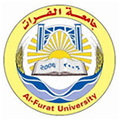آخر الأخبار
تأثير غبار الاسمنت في بعض الصفات الفيزيولوجية لشجرة الفستق الحلبي ونوعية ال DNA المستخلص منها
2010, Volume 2, issue 7,pp 283-306| Cite as
Effect of cement dust on physiological and quality of extracted DNA from Pistacia vera
| authors |
Mohammed Ayman Al-Diri,Mahmoud Haitham Al Sayed |
| Abstract |
This experimtient was conducted to study the effect of cementing dust that was rising from the cement plant and accumulated on the leaves of pistachio trees at Muslimyah village and compared with similar trees in the Naqarin village. The results showed that the average of evapotranspiration decreased as temperature rise in August to €.179 mg/g/h in Muslimyah village versus 0.203 mg/grh in Naqarin, while the average of evapotranspiration in May does not exceed 0.465 mg/gr/h for trees of both Muslimyah and Naqarin. The results also showed tow leaf growth at the cement dust potiuted area as compared with tree leaves at Nagarin area Full leaf area is 170 cm² versus 81cm² of Muslimyah tree leaves. Dust wad affected Chlorophyll concentration, which decreased to one-third chlorophyll Concentration in the Muslimiyati vihage as compared with the Naqarin village. The overall negative influence of some physiological events reflected on the trees growth, at which shoots length has been affected, in addition to the number of the remaining buds in the dust polluted fietas decreased to 16% versus 44% of the remaining buds of the Naqarin fields and this in tum had a negative impact on the tree productivity and fruit quality. The results showed some difficulties when the DNA extraction did from polluted leaves as compared with unpolluted leaves that where collected from other places. Key words; pistachio, cementing dust, evapotranspiration, chlorophyll, DNA extraction. |
| الكاتب |
محمد أيمن الديري, محمود هيثم السيد |
| الملخص |
نفذت هذه التجربة لدراسة تأثير غبار الإسمنت المتصاعد من معمل الاسمنت المتراكم في أوراق أشجار الفستق الحلبي في قرية المسلمية مقارنة مع أشجار مماثلة بعيدة في قرية نقارين. لقد أظهرت النتائج انخفاض معدل النتح مع ارتفاع درجات الحرارة في شهر آب، فقد بلغ0.179 مغ/غ/سا في قرية المسلمية مقابل 0.303 مغ/غ/ سا في نقارين،في حين كان معدل النتح في شهر أيار لا يتجاوز 0.465مغ/ع/ سا في أشجارالمسلمية ونقارين.
كما أظهرت النتائج بطء نمو الورقة في المنطقة الملوثة بغبار الإسمنت مقارنة م ع أوراق أشجار منطقة نقارين، حيث بلغت مساحة الورقة الكاملة 170 سم2 وفي قرية نقارين يقابلها 31سم2 في أوراق أشجار قرية المسلمية الملوثة، كما أثر الغبار في تركيز الكلوروفيل، فقد انخفض تركيز الكلوروفيل إلى الثلث في قرية المسلمية بالمقارنة مع قرية النقارين وفي المجمل فإن هذا التأثير السلبي لبعض الفعاليات الفيزيولوجية أنعكس على نمو الأشجار، فقد تأثر طول النموات الخضرية، كما انخفض عدد البراعم المتبقية في الحقول الملوثة إلى 16% مقابل 44% من البراعم المتبقية في حقول منطقة نقارين، وهذا بدوره أثر سلبا في إنتاجية الشجرة ونوعية الثمار، كما وتبين من النتائج وجود صعوبات كثيرة في استخلاص المادة الوراثية (الحمض النووي الريبي منقوص الأوكسجين) من أوراق النبات، حيث أثرت في نوعية ال DNA في العينات الملوثة بغبار الإسمنت مقارنة مع عينات أخرى كانت قد جمعت من أماكن أخرى غير معرضة للتلوث |














